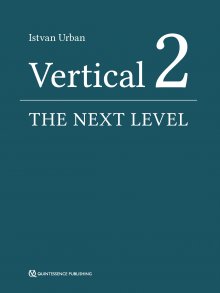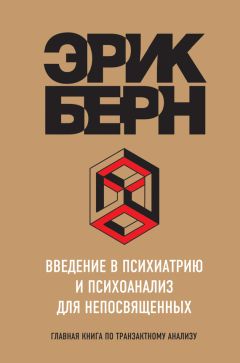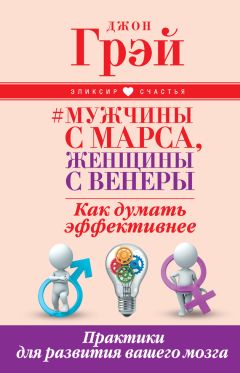Istvan Urban - Vertical 2: The Next Level of Hard and Soft Tissue Augmentation

Скачивание начинается... Если скачивание не началось автоматически, пожалуйста нажмите на эту ссылку.
Жалоба
Напишите нам, и мы в срочном порядке примем меры.
Описание книги "Vertical 2: The Next Level of Hard and Soft Tissue Augmentation"
Описание и краткое содержание "Vertical 2: The Next Level of Hard and Soft Tissue Augmentation" читать бесплатно онлайн.
A major part of this book comprises full-color, step-by-step images of patient cases. At times, reading it is like watching a surgical video, where the author 'stops the video' to discuss with you, the reader, what he is thinking and doing at that step, what his next step will be, and the reason for it.
Included again are the well-appreciated 'Lessons learned' sections, where the learning objectives are emphasized and further notes given, including ways to further improve the techniques. The section on the mandible is more detailed in this book, with the focus on larger defects and the different surgical steps in native, fibrotic, and scarred tissue types around the mental nerve during flap advancement.
In addition, light is shed on the detail in treating the anterior maxilla, which has not been published previously. It includes treatment options such as the fast track, the safe track, and the technical track of soft tissue reconstruction in conjunction with bone grafting as well as papilla reconstructions after bone regeneration. The section on the posterior maxilla hopes to resolve issues such as the management and complications of combined ridge and sinus grafting, including difficulties such as the lack of buccal, crestal or nasal bony walls of the posterior maxilla before bone grafting.
In this must-have new publication, the procedures are kept simple, repeatable, and biologically sound. The techniques presented are not overcomplicated; they are simple treatment strategies with lower complication rates and more predictability in the final outcome.
In a preclinical in vivo setting, a chronic vertical defect was treated using a xenograft. After 17 weeks of healing, the following was found: Emerging from the defect bed, the bone growth of a moderate to marked amount showed similar signs of remodeling, resulting in significant vertical ridge augmentation. The bone filler was markedly osteointegrated, showed slight signs of degradation, and demonstrated definite signs of osteoconduction (bone growth on the surface of the granules). The newly formed bone harbored numerous osteoblasts (Figs 1-5 and 1-6).
The epifluorescence analysis showed a marked grade of mineralization activity at different time points (OTC and XO), respectively. The signs of mineralization activity were visible at the newly formed and remodeled harversian systems (numerous concentric labeled rings). The outer circumferential bone lamellae were not fully formed, as is shown by their irregular shape. Two distinct and spaced lines of labeling (first OTC, then XO) indicated a marked vertical bone growth (Figs 1-7 to 1-10).
Figures 1-9 and 1-10 show that the xenograft particles are well incorporated in the newly formed trabecular bone. These images also demonstrate the phases of bone formation and maturation.
In the first phase, the newly formed ridge is present, but the cortical bone and the lacunae are not fully developed. This is referred to as ‘baby bone’ (Figs 1-11 and 1-12).
Figs 1-7 and 1-8 Epifluorescence analysis of a well-developed and mature bone after vertical augmentation.
In the next phase, the bone starts to further mature and corticalize, after which the outer layer becomes smooth and gains its final shape. Although the bone was good enough for the placement of implants, it would need about 3 more months to fully develop.
Figs 1-9 and 1-10 Epifluorescence analysis demonstrating the haversian canals and the cortical bone formation of the newly formed bone. The images demonstrate the incorporation of a biomaterial into the newly formed bone and the different time points of bone maturation. BO: anorganic bovine bone mineral; HC: haversian canal; NB: new bone; CB: cortical bone.
The healing time was 6 months (Figs 1-13 and 1-14). The implants were placed about a millimeter subcrestally. A tissue level implant placed into the bone with the polished collar 1 mm into the bone would be an excellent choice in the posterior region. The same patient had the other side grafted 10 months earlier. Due to scheduling issues, one side healed for longer than the other, but now the two phases of maturation can be compared. The ridge defects were similarly narrow (Figs 1-15 to 1-21).
Fig 1-11 The outer surface of the ‘baby bone’ demonstrating irregularity and less maturity than the inner layer of the newly formed bone. This outer layer, referred to in this book as the ‘smear layer’ (see arrow), is about 1.5 mm in width. It will be remodeled and ‘shredded off’ during maturation.
Fig 1-12 Image showing an area where corticalization has begun.
Figs 1-13 and 1-14 Clinical example of a posterior mandibular ridge augmentation using the Sausage technique. Note that some of the area is corticalized, whereas other parts are still in maturation.
Figs 1-15 and 1-16 Occlusal and labial views of a narrow posterior mandibular ridge.
Fig 1-17 Labial view of the graft consisting of a 1:1 ratio of autogenous bone mixed with anorganic bovine bone mineral (ABBM).
Figs 1-18 and 1-19 Labial and occlusal views of the fixated and stretched collagen membrane in place.
In this book, the smear layer will be highlighted, especially in the anterior maxilla chapters where it will be modified and preserved using the Mini Sausage technique as a secondary bone graft protecting the newly formed ridge.
The clinician should bear in mind that the smear layer will be either lost or modified. In most posterior cases, it is allowed to be shredded off, placing the implants deeper into the bone, whereas in the esthetic region, the Mini Sausage technique is used to prevent its resorption. These clinical procedures are exciting, and knowing the biology and dynamics of bone formation is essential to success.
Fig 1-20 Occlusal view of the mature, corticalized, newly formed ridge.
Fig 1-21 Note the excellent cortical bone formation.
Dense versus perforated membrane
The use of a membrane in GBR has been evaluated successfully for decades in multiple clinical and preclinical investigations. The role of the membrane has been determined to exclude competing cells such as fibroblasts. The clinical experience demonstrated that an important role of the membrane is to stabilize the bone graft. This has been well demonstrated in the Sausage technique using a collagen membrane and titanium pins for immobilization. In the author’s experience, the Sausage technique has resulted in the best bone quality and is usually faster and better than PTFE membranes. The native collagen membrane allows transvascularization and a possible accumulation of osseoinductive stimuli from the periosteum. In addition, the fast resorption of the collagen may also play a part in the maturation of the graft, since the periosteum holds vessels as well as mesenchymal cells that can turn into bone-forming cells. Therefore, a perforated membrane might help in bone formation. The goal is to develop ‘sausage-like’ bone quality faster.
One idea was to perforate PTFE membranes to allow faster bone maturation. In several preclinical investigations, different aspects of this idea were investigated, as is shown in the following subsections.
I. Dense vs perforated membrane using bone morphogenetic protein-2 (BMP-2) as a graft
The osseoinductive action of BMP-2 depends on the presence of mesenchymal cells. The question is: How important are these types of cells in the periosteum versus the bone surface and the blood clot?
Dense versus perforated membrane was compared in a chronic vertical defect (Figs 1-22 to 1-24). The results demonstrated significantly more bone fill when using the perforated membrane. The non-perforated membrane usually demonstrated appositional bone formation from the host bone with a lack of bone formation under the membrane (Figs 1-25 to 1-27). These results demonstrated that the communication with the periosteum might be important when a graft containing BMP-2 is being used, such as autogenous particles.
II. Perforated vs non-perforated membranes using an osteoconductive graft material
This experiment focused on the vascularization and bone formation activity of the newly formed bone. A xenogenic bone graft was used without any growth factors or autogenous bone. The perforated membrane was used with and without a collagen membrane covering the non-perforated membrane (Figs 1-28 to 1-31). Each group demonstrated a similar amount of bone formation as well as soft tissue invagination (Figs 1-32 to 1-34). However, when the vascularized area of the regenerated ridge was examined, the perforated group demonstrated a tendency toward better vascularization (Fig 1-35 and Table 1-1).
Fig 1-22 Labial view of a dense membrane fixated around a chronic vertical defect.
Fig 1-23 Labial view of a perforated membrane fixated around a chronic vertical defect.
Fig 1-24 Bone morphogenetic protein-2 (BMP-2) is bound into a collagen carrier. No other graft is used.
Figs 1-25 and 1-26 Cross-sectional views showing bone formation in both groups just below the periosteum and above the membrane.
Fig 1-27 Graph showing bone growth of the perforated and non-perforated sites. The perforated membranes demonstrated significantly more bone growth.
Fig 1-28 Labial view of a xenograft placed on a chronic vertical defect.
Fig 1-29 Labial view of a fixated dense membrane.
Fig 1-30 Labial view of a perforated membrane.
Fig 1-31 Labial view of a perforated membrane covered with a collagen membrane.
The tendency of having less pseudoperiosteum formation has been seen in well-adapted sites, even in cases of perforated membranes (Figs 1-36 and 1-37). Since membrane adaptation seems to be important, a hybrid design PTFE mesh/membrane was tested clinically (Fig 1-38).
Figs 1-32 and 1-33 Cross-sectional views of the histologies of the regenerated bone after vertical ridge augmentation in this study.
Fig 1-34 Graph showing the bone formation of the three groups. No statistically significant differences were found.
Fig 1-35a and b The perforated group demonstrated a tendency toward better vascularization.
Solid Perforated Perforated, covered with collagen 2.44 8.33 7.93 7.22 8.41 4.40 2.77 11.26 6.58 13.83 12.41 5.54 4.76 5.64 2.48 2.30 3.62 4.24 7.07 10.62 5.77 3.58 6.87 1.89 5.50 8.40 4.85Table 1-1 Table showing the tendency toward a better vascularized surface of the perforated group.
Figs 1-36 and 1-37 A well-adapted dense and perforated membrane showing minimal soft tissue ingrowth.
Fig 1-38 The membrane showed excellent performance in terms of clinical results as well as adaptability and retrievability.
Fig 1-39 Cross-sectional view of the osteocalcin (OCN) marker. The squares demonstrate the regions of interest (ROIs) that were investigated.
Fig 1-40 Graph showing the results of the OCN marker for the three groups investigated.
Fig 1-41 Cross-sectional view of the alkaline phosphatase (ALP) marker. The squares demonstrate the ROIs that were investigated.
Подписывайтесь на наши страницы в социальных сетях.
Будьте в курсе последних книжных новинок, комментируйте, обсуждайте. Мы ждём Вас!
Похожие книги на "Vertical 2: The Next Level of Hard and Soft Tissue Augmentation"
Книги похожие на "Vertical 2: The Next Level of Hard and Soft Tissue Augmentation" читать онлайн или скачать бесплатно полные версии.
Мы рекомендуем Вам зарегистрироваться либо войти на сайт под своим именем.
Отзывы о "Istvan Urban - Vertical 2: The Next Level of Hard and Soft Tissue Augmentation"
Отзывы читателей о книге "Vertical 2: The Next Level of Hard and Soft Tissue Augmentation", комментарии и мнения людей о произведении.




















